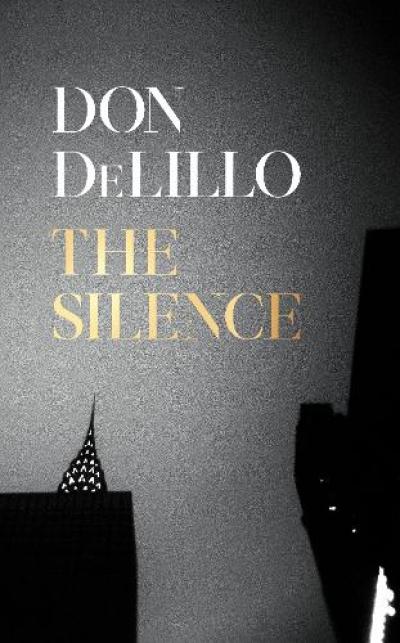Don DeLillo: The Silence review - when the lights of technology go out | reviews, news & interviews
Don DeLillo: The Silence review - when the lights of technology go out
Don DeLillo: The Silence review - when the lights of technology go out
Pointedly prescient novella asks what happens to language in the aftermath of 'the event'

Don DeLillo’s latest novella, The Silence, has been marketed with an emphasis on its prescience, describing the shocked lacuna of time around a devastating event whose repercussions are yet to be truly felt.
The Silence has echoes of other texts, with two in particular that stand out. The first was DeLillo’s own 1997 behemoth Underworld, with significant ball games being played in both. The Silence’s game is stopped abruptly by the event, with one of the characters taking up its narration in front of a blank screen. Here, there is also more than a nod to David Foster Wallace’s dystopia, Infinite Jest, which centred around a film so wonderful its viewers were found starved to death in front of the TV screen. It’s also there in a reference to footnotes and the esoteric naming of a stadium.
 It’s hard, especially with these references, to get away from the sense that this is a significant late text by A Great American Novelist. Still, as the book progresses, it argues its own case well. It follows five characters who are due to come together to watch the aforementioned game, two of whom (Tessa and Jim) are flying into New York at the opening of the book. The event, which seems to have disrupted all technology, downs their plane, but they survive, more or less unscathed. Their recollection of events seems to be slippery, hazy, and they revert back to primal instincts, having sex in the first bathroom that they come across.
It’s hard, especially with these references, to get away from the sense that this is a significant late text by A Great American Novelist. Still, as the book progresses, it argues its own case well. It follows five characters who are due to come together to watch the aforementioned game, two of whom (Tessa and Jim) are flying into New York at the opening of the book. The event, which seems to have disrupted all technology, downs their plane, but they survive, more or less unscathed. Their recollection of events seems to be slippery, hazy, and they revert back to primal instincts, having sex in the first bathroom that they come across.
The Silence is filled with slippages, elisions, lacunae: what is not said. The characters talk at one another, riffing on their own obsessions, culminating in a series of monologues that conclude the book. Their talk ranges from ceilings in Rome to the worship of Einstein, skeins of thought that never really come together but are loosely gathered under a sort of exploration of life, its meaning, and the temporal and spatial confusion that underlies the book.
The confusion comes from an external event, but the outside is rarely seen, except when another character, Max, storms out of the apartment where he is hosting the gathering with his partner. Instead, turmoil is internal, especially given that the technology shut-down forces people not only into their own houses, but also into their own minds. Their external reference points are beginning to be lost: Tessa at one point speaks in a language that “is simply fake, a dead language, a dialect, an idiolect”. The characters envisage people spilling out onto the street, mixing together in homogenous masses, without the guiding lights of technology and the artificial borders of society.
It is this breakdown that feels prescient, given the past year, even though it feels as though this particular terrible event has had the opposite effect: a firmer drawing of borders, isolation, and an even greater reliance on technology. The Silence may not be the perfect vehicle to explore another world-changing event, but it shows us what might have been, had the virus been technological and not airborne.
- The Silence by Don DeLillo (Picador, £14.99)
- Read more book reviews on theartsdesk
rating
Explore topics
Share this article
The future of Arts Journalism
You can stop theartsdesk.com closing!
We urgently need financing to survive. Our fundraising drive has thus far raised £49,000 but we need to reach £100,000 or we will be forced to close. Please contribute here: https://gofund.me/c3f6033d
And if you can forward this information to anyone who might assist, we’d be grateful.

Subscribe to theartsdesk.com
Thank you for continuing to read our work on theartsdesk.com. For unlimited access to every article in its entirety, including our archive of more than 15,000 pieces, we're asking for £5 per month or £40 per year. We feel it's a very good deal, and hope you do too.
To take a subscription now simply click here.
And if you're looking for that extra gift for a friend or family member, why not treat them to a theartsdesk.com gift subscription?
more Books
 'We are bowled over!' Thank you for your messages of love and support
Much-appreciated words of commendation from readers and the cultural community
'We are bowled over!' Thank you for your messages of love and support
Much-appreciated words of commendation from readers and the cultural community
 Thomas Pynchon - Shadow Ticket review - pulp diction
Thomas Pynchon's latest (and possibly last) book is fun - for a while
Thomas Pynchon - Shadow Ticket review - pulp diction
Thomas Pynchon's latest (and possibly last) book is fun - for a while
 Justin Lewis: Into the Groove review - fun and fact-filled trip through Eighties pop
Month by month journey through a decade gives insights into ordinary people’s lives
Justin Lewis: Into the Groove review - fun and fact-filled trip through Eighties pop
Month by month journey through a decade gives insights into ordinary people’s lives
 Joanna Pocock: Greyhound review - on the road again
A writer retraces her steps to furrow a deeper path through modern America
Joanna Pocock: Greyhound review - on the road again
A writer retraces her steps to furrow a deeper path through modern America
 Mark Hussey: Mrs Dalloway - Biography of a Novel review - echoes across crises
On the centenary of the work's publication an insightful book shows its prescience
Mark Hussey: Mrs Dalloway - Biography of a Novel review - echoes across crises
On the centenary of the work's publication an insightful book shows its prescience
 Frances Wilson: Electric Spark - The Enigma of Muriel Spark review - the matter of fact
Frances Wilson employs her full artistic power to keep pace with Spark’s fantastic and fugitive life
Frances Wilson: Electric Spark - The Enigma of Muriel Spark review - the matter of fact
Frances Wilson employs her full artistic power to keep pace with Spark’s fantastic and fugitive life
 Elizabeth Alker: Everything We Do is Music review - Prokofiev goes pop
A compelling journey into a surprising musical kinship
Elizabeth Alker: Everything We Do is Music review - Prokofiev goes pop
A compelling journey into a surprising musical kinship
 Natalia Ginzburg: The City and the House review - a dying art
Dick Davis renders this analogue love-letter in polyphonic English
Natalia Ginzburg: The City and the House review - a dying art
Dick Davis renders this analogue love-letter in polyphonic English
 Tom Raworth: Cancer review - truthfulness
A 'lost' book reconfirms Raworth’s legacy as one of the great lyric poets
Tom Raworth: Cancer review - truthfulness
A 'lost' book reconfirms Raworth’s legacy as one of the great lyric poets
 Ian Leslie: John and Paul - A Love Story in Songs review - help!
Ian Leslie loses himself in amateur psychology, and fatally misreads The Beatles
Ian Leslie: John and Paul - A Love Story in Songs review - help!
Ian Leslie loses himself in amateur psychology, and fatally misreads The Beatles
 Samuel Arbesman: The Magic of Code review - the spark ages
A wide-eyed take on our digital world can’t quite dispel the dangers
Samuel Arbesman: The Magic of Code review - the spark ages
A wide-eyed take on our digital world can’t quite dispel the dangers
 Zsuzsanna Gahse: Mountainish review - seeking refuge
Notes on danger and dialogue in the shadow of the Swiss Alps
Zsuzsanna Gahse: Mountainish review - seeking refuge
Notes on danger and dialogue in the shadow of the Swiss Alps

Add comment